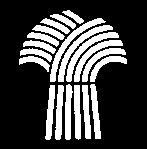4 JACOB AND CATHERINE NEFF DLINE PART 2 BY
2° CERTAMEN DE CINE JACOBEO “PUENTE ENTRE CULTURAS” FESTIVAL3RD GRADE SUPPLY MONEY JACOB BURNETT 3RD GRADE SUPPLY
4 CONGREGATION B’NAI JACOB 7227 BITTERSWEET MOORS DRIVE FORT
4 JACOB AND CATHERINE NEFF DLINE PART 2 BY
40 FEDERALISM AND CONSTITUTIONAL ENTRENCHMENT JACOB T LEVY1 THE
9 Erickson Jenet Jacob Erickson phd Curriculum Vita
It is uncertain where Jacob and his family lived from 1735 until the marriage of his daughter to Johan George Shideler; the na
Jacob and Catherine Neff D-Line Part 2
By John F Murray
Part 1 of this series is in the February 2004 issue of Neff News. I have received so much information on this line that it has become evident that a major revision is needed. Thanks to Bill Neff for his tireless research of records of Frederick County, MD. As a result a new and more accurate picture of this line is emerging. Before proceeding I want to make one correction to information in Part 1. Dr. Francis Neff and family immigrated in 1719 from Dühren, Germany, not from Gemmingen, Germany. Because the records of his departure were filed in the archives in Gemmingen it was assumed that he lived there. But thanks to our researcher in Germany, Dr. Heinz Sprenger, this information has been corrected.
At the end of Part 1 it would appear that in 1735 Jacob and Catherine and their family were still living in Coventry Township, Chester, Co., PA. Jacob sold his 1717 warrant rights in 1735 to Martin Funk who in turn had the land surveyed on June 12, 1735 before selling it to Derick Jensen of Germantown, PA.
It is uncertain where Jacob and his family lived from 1735 until the marriage of his daughter, Margaret, to Johan George Shideler; (the name is spelled “Schaiteler” in the marriage record). Sometime between 1735 and 1739, Jacob moved his family to Lancaster County settling on the west side of the Susquehanna River at Kreutz Creek which became part of York County in 1749. The marriage record of Jacob's daughter Margaret to Johan George Shideler was dated 20 December 1739 and gives her address as Kreutz Creek and his as Monocacy, which is near Frederick, MD. This marriage, performed by a traveling Lutheran pastor named Hans Casper Stover Sr., was recorded in both the cities of York and Lancaster. [The Pastoral Records of Hans Casper Stover Sr., translated by Frederick S. Weiser from Stover Original Record Book in the collection of the Historical Society of Pennsylvania, Philadelphia, PA.]
On 8 May 1740, Jacob Neff [D] was in Monocacy, Maryland and purchased land called "Hedge Hogg" from Solomon and Rebecca Hedges paying £127.6 “money of Pennsylvania.” The fact that Jacob paid in “money of Pennsylvania” suggests that he was just moving from Pennsylvania to Maryland. [Prince George’s County Records, Libre Y, folio 170-171].
Then in 1742 he sold “Hedge Hogg” to William and Ann Hedges. However, William Hedges died before the transaction was complete. In his will William Hedges willed “Hedge Hogg” to his son Joseph and a child yet to be born if a son when they become 21. The child was a son who was named William Jr. William Sr. died before 14 January 1743, the date his will was probated. Because William had not completed payment for the land, Jacob Neff was listed as the only creditor in Hedge’s estate. Evidently an agreement was made that the price of the land would be paid off in an installment bond. After Hedge’s death his widow married Stephen Julian on 14 July 1743. On 12 June 1747, Stephen Julian paid Jacob Neff £22 and 5/6 pounds plus interest on the bond owed by William Hedges. There were perhaps other unrecorded payments made. Existing tax records show that Stephen Julian paid taxes on “Hedge Hogg” from 1753 to 1773. [Maryland Rent Rolls- Frederick Co., MD Book 1, 32:39]
While there was no mention of “Hedge Hogg” or the bond in Jacob Neff's [D] will or estate in 1751, his wife Catherine, executrix of his estate, must have turned over the deed and bond to her son Jacob Neff [D3]. On 15 March 1763 "Jacob Kneff, heir at law of Jacob Kneff, deceased," deeded “Hedge Hogg to Joseph and William Hedges Jr, … heirs at law of William Hedges, … with the widows portion going to their mother.” This wording surely refers back to William Hedges’ will of 1742. For this transaction Jacob Neff [D3] was paid £150 pounds current money, which evidently was the amount of the outstanding principle and interest on the bond between Jacob Neff [D] and William Hedges. Elizabeth Neff, wife of Jacob Neff [D3], signed off on her wife's dower in the property. [Prince Georges Co. MD. Land Records, Libre Y, folio 171 and Frederick Co. Deed Book Libre H, folio 330.] Perhaps some of the £150 pounds of money collected by Jacob [D3] should have gone to his mother Catherine but it didn't. Perhaps this might be the reason Catherine excluded her son Jacob from her will by giving him "only one Shilling and no more."
The names of Jacob Neff [D] and John Henry Neff [A21] appear together as Jacob Knafe and Heinrich Knafe on the petition of landowners dated October 1742 “seeking the creation of ‘All Saints Parish’ from Prince George’s Parish.” This new parish would become Frederick County in 1746. The petition is owned by the Maryland Catholic Diocesan Archives and is currently on deposit with the Maryland Historical Society in Baltimore, Maryland. Looking at the spelling of the name Knafe, it seems obvious that Jacob and Henry did not themselves sign their names. Rather it appears someone went through the neighborhood collecting names of those who would support the petition and then wrote the names on the petition as he thought they were spelled.
On 19 October 1743 Jacob Neff was naturalized in Prince George’s County, Maryland, which at that time included Frederick County. His name was recorded as Jaed Knave [sic] and was listed as a Quaker. The same day Martin Shope [sic], was naturalized and also listed as a Quaker. [Wyand, Jeffrey, Colonial Maryland Naturalizations, Genealogical Publishing Co., Baltimore, MD, 1975, page 16, Naturalizations Granted under Statutes 13 George II c.7 and 20 George II c. 44, Hall of Records Doc. EI – 7, 302]. In the same document are the names George Sheidler [sic], Jacob Neff’s son-in-law and George Sweinharg [sic], who became the father-in-law of Jacob’s daughter Esther. [EI – 7, 296.] Surely Jacob and Martin were listed as Quakers simply because like the Quakers they refused to “swear” an oath. Evidently the recorder was not acquainted with the practices of the Mennonites and Brethren to “affirm” so he just listed them as Quakers.
Jacob Neff [D] wrote his will on 2 October 1750 and it was entered into probate on 21 March 1751 in Frederick County MD. He willed everything to his wife Catherine whom he named executrix. He did not name his children in his will but named 3 parcels of land: "The place I now live on called ‘Durnah’ ... and one hundred acres of land betwixt the Mountains, which I bought from Daniel Dulany fifty acres and from Nedley Thomas the other fifty acres." These three pieces of land did not include the 258 acres called "Hedge Hogg." [Wills, Liber 28, folio 121, Hall of Records, Annapolis.]
There is no land called “Durnah” in the Frederick County records. “Durnah” seemingly has no meaning in German or English. Did the person writing Jacob’s will in English misunderstand the word or simply didn’t know how to spell the name correctly? “Durnah” might be the land called “Teernoch” which was resurveyed on May 15, 1753 for tax purposes. This resurvey had “a dwelling house 24 x 18 with a stone chimney and a stove, covered with shingles, two log cabins 14 x 10 each covered with puncheon and a very good roof.” [Tracey, Pioneers of Old Monocacy, page 48]
Where was “Durnah” located? Referring back to Jacob’s will, I note that the witnesses to his will lived near each other. In 1750 Charles Hedges lived on “Hedges Delight” at Yellow Springs about three miles southwest of Stephen Julian who lived on “Hedge Hogg.” John Stoner lived on land bordering “Hedge Hogg” on the north and Adam Stull lived a couple of miles north of Charles Hedges and a bit southwest of the present village of Bethel. In those days neighbors often signed as witnesses. So I suspect that Jacob Neff and family lived in close proximity to these men on his land that he called “Durnah” in his will. George Schweinhardt, father-in-law of Esther Neff [D4], lived a couple of miles south on land bordering on “Tasker’s Chance,” where Hans Heinrich Neff [A21] lived from 1741 until 1749.
In 1741 Adam Stull, Philip Kuntz, Jacob Staley and Hendrick Sicks/Six (sic) bought land from Daniel Dulany. The survey of Six’s land began at a point “on the west side of the glade that falls into Jacob Neff’s spring branch,” known today as Muddy Run. [Pioneers of Old Monocacy, page 218] Muddy Run begins north and west of Bethel near Six’s land and flows east and curves south past Bethel on the east side. South of Bethel it winds eastward either through “Hedge Hogg” or just south of it to where it empties into the Monocracy River.
A land survey made in 1743 to Pastor Candler refers to land that lay on the west side of the road that runs from Philip Kin’s to Jacob Neff’s. [Survey: C/S: LG E:211] Philip Kin/Ken, a shoemaker, lived on land by Bethel through which the German Monocacy Road ran. In 1749 Jacob served as the overseer of this section of the road to Frederick Town. From Bethel this road went south toward George Swinehart’s land. A branch went west to Yellow Springs. A mile or so south of Bethel a branch went east and crossed the Monocracy River at Biggs Ford south of “Hedge Hogg.” Jacob might have lived right at that junction which was about midway between the lands of all the witnesses to his will. Such a location would have been very advantageous to his blacksmith trade.
Judging from the above surveys Jacob’s land called “Durnah” probably laid west of “Hedge Hogg” and perhaps straddled Muddy Run and extended westward to the German Monocacy Road that ran south out of Bethel to the junction where a branch turned eastward. The road called “Sunday’s Lane” today probably runs through Jacob’s property. But more research is needed to precisely locate “Durnah.”
Charles Hedges and Adam Stull, two of the witnesses of Jacob’s will, took the inventory of Jacob’s estate on 1 April 1751. Among the items listed were blacksmith tools, a large Bible and several Psalm Books, mentioned in Part 1. [Inventories, Liber 47, folio 60, Hall of Records, Annapolis]. This Bible might have the family records. One might assume that Catherine kept the Bible in her possession until her death at the home of her son John [D7]. Since John had no children, the Bible might have passed to Jacob, executor of John’s estate and son of Adam [D6]. If the Bible still exists it will probably be found among Adam’s descendants in Washington or Frederick Counties, MD. However, two of Adam’s grandsons, Adam and George, sons of Jacob went to Preble County, OH. So the Bible might be found there. Another possibility is that since John’s sister Catherine [D8] was the last resident of John’s house, the Bible might be found among her descendants.
Evidently Catherine Neff sold “Durnah” after Jacob’s death and moved her family to the other land mentioned in Jacob’s will, namely the 100 acres he bought from Daniel Dulany and Nedley Thomas. She kept this land until shortly before her death in 1776. It appears to be the land that Catherine Neff sold Martin Shoup called “Addition to Legacy” on 20 Nov. 1775 for £184. [Deed Libre U, folio 406]. It boarded land called “Legacy” which her son Jacob bought for £33 on 19 May 1761 from Isaac Snively of Lancaster Co., PA and then sold to Martin Shaup (sic) for £184 on 28 June 1773. [Frederick Co., MD Deed Book, Libre T, folio 25].. [Deed G – 202]
In 1759 Catherine warranted land from the State of Maryland containing 400 acres called “Turkey Plains.” The land lay between the present towns of Bolivar and Frostown. Then on 8 June 1762 she sold this land off in 4 plots. These were sold to Gabriel Swinehart [husband of Esther Neff [D4]], to John Ripligh [perhaps the first husband of Catherine Neff [D8], and to her sons John [D7] and Adam Neff [D6]. Catherine divided the land so each paid her £50 money for the part they received. Because all four parts were valued at £50 it seems fairly certain that Catherine was trying to treat all four recipients equally. Because John Ripligh received equal treatment, it appears that John Ripligh was a son-in-law. [Frederick Co., MD Deeds Libre H7; H55; H74; H178]
While John Ripligh got 81 acres and buildings, it appears that Adam’s part had better buildings because he received only 51 acres for the same money. Adam sold his part for £130 pounds current money on 9 July 1765, which is just three years after he got the land. [Frederick Co., MD Deed Libre J-1318]
Following Catherine’s sale of “Turkey Plains” in 1762, she probably continued to live on the land called, “Addition to Legacy” until she sold it in 1775 and then moved in with her son John [D7]. She wrote her will on 2 February 1776 and it was entered into probate on 12 March 1776. From these dates we can determine that Catherine died between 2 February and 12 March in 1776. In her will she named all her children except her daughter Catherine and made her son John executor leaving him all her personal property. The omission of her daughter Catherine in her will might have been a copy error when translating her will from Germany to English.
Part 3 of this series will cover Jacob and Catherine’s children and the reasons for giving them new numbers.
9 JACOB’S GAIN WHILE CALLING UPON GOD IN BEERSHEBA
A BENGURION UNIVERSITY OF THE NEGEV THE JACOB
A) MÉTODO DE JACOBI DE FORMA MATRICIAL AX
Tags: catherine neff, daughter catherine, jacob, dline, catherine
- T HOMSON NELSON FIELD TEST EVALUATION FORM DRAFT STUDENT
- THÔNG TƯ HƯỚNG DẪN XÁC ĐỊNH HỆ SỐ ĐIỀU
- BANK DBS INDONESIA SWIFT CODE BANK NAME PT
- LETTERS ARE A SIMPLE AND POWERFUL WAY TO LET
- PLIEGO DE CLAUSULAS ADMINISTRATIVAS PARTICULARES QUE HA REGIR EL
- UNOFFICIAL COPY AS OF 101221 12 SPEC SESS 12
- 8 ADATKÖZLÕ LAP A FELSZÁMOLANDÓ CÉG NEVE SZÉKHELYE LEVELEZÉSI
- LOGISTIC REGRESSION LOGISTIC REGRESSION IS GENERALLY THOUGHT OF
- WOMANIFESTO FEBRUARYMARCH1999 NEWSLETTER OF THE MSU WOMEN’S CENTER MARCH
- INFORMACJA DLA ARMATORÓW JACHTÓW KOMERCYJNYCH NA DOSTOSOWANIE JACHTÓW DO
- SMALLEY WEEK 6 – LESSON 1 PART 2 LESSON
- 4 PERSONAL ENERGY AUDIT SPREADSHEET STUDENT HANDOUT PERSONAL ENERGY
- TIPO DOCUMENTO PROCEDIMIENTO PN06 PÁGINA 1 DE 21 VERSIÓN
- (IFYLLES AV STAR ALARM AB) ANL NR REGISTER &
- PÁGINA 5 DE 5 CONTRATO DE PRESTACIÓN DE SERVICIOS
- NEW JCOMM SERIES REPLACES DISCONTINUED MMROA SERIES JOINT WMOIOC
- COMPOSICION DEL CONSEJO VECINAL PRESIDENTE D ANTONIO PÉREZ PÉREZ
- RATA SINUCIDERILOR PE SEXE ŞI GRUPE DE VÂRSTĂ DEFINIŢIE
- 87989 MARCH 2014 FREEDOM OF INFORMATION REQUEST YOU ASKED
- 86 ANATOMÍA UROGENITAL 1 APARATO URINARIO COMPRENDE LOS RIÑONES
- ANALYSIS OF SEDIMENT TRAP EFFICIENCY OF SMALL WATER RESERVOIRS
- R ĂZBOI BLESTEMAT DUMITRU STAN PREŞEDINTE FONDATOR AL ASOCIAŢIEI
- COMMONWEALTH OF MASSACHUSETTS TOWN OF HUDSON APPLICATION FOR DISPOSAL
- MARCH 6 2005 THE PRESIDENTS ADVISORY PANEL ON FEDERAL
- EJERCICIO 1 LA FÁBRICA ¨SANDALSWEET SA¨ SE DEDICA A
- OGÓLNE WARUNKI NAJMU LOKALI WYŻSZEJ SZKOŁY ZARZĄDZANIA I BANKOWOŚCI
- “RESPONSIBLE GREEN DESTINATION AMAZON OF EUROPE” DANUBETRANSNATIONALPROGRAMME PROJECTCODEDTP336222 ACRONYM
- EJERCICIO DE CLÁUSULAS SUSTITUYE EL INFINITIVO DE LOS VERBOS
- BUENOS AIRES () DE () DE 20() SRES TOYOTA
- SLO CYCLE ASSESSMENT FORM PLEASE TYPE ON THIS FORM
LOGROS DE LENGUA CASTELLANA PARA EL GRADO 7º PARA
 MERKEL MULTICULTURALISMO EN ALEMANIA UN FRACASO TOTAL REDACCIÓN SÁBADO
MERKEL MULTICULTURALISMO EN ALEMANIA UN FRACASO TOTAL REDACCIÓN SÁBADOARCHIVES DÉPARTEMENTALES DES ALPESDEHAUTEPROVENCE 4 J FONDS HONNORAT
 ACCIDENT INCIDENT AND INJURY REPORT OFFICE OF PEOPLE AND
ACCIDENT INCIDENT AND INJURY REPORT OFFICE OF PEOPLE AND CONSEJO GENERAL DEL PODER JUDICIAL COMISIÓN DE ESTUDIOS E
CONSEJO GENERAL DEL PODER JUDICIAL COMISIÓN DE ESTUDIOS EA SOCIAL OUTCAST IN ONE’S OWN MIND PAGE 32
KIERUNEK STUDIÓW OPTOMETRIA II STOPIEŃ W ROKU AKADEMICKIM 2015
 THE CITY OF LAKEWOOD HEAD START PROGRAM ENROLLING
THE CITY OF LAKEWOOD HEAD START PROGRAM ENROLLING Z A R Z Ą D Z E N
Ðïࡱáþÿ )+þÿÿÿ(¥áq`ð¿&bjbjqpqp Ÿÿÿÿÿÿ¤¤¤¤¤¤¤¤¸ ¸1¶dddddddd¼¾¾¾¾¾¾çho¾¤ddddd¾¤¤ddëvvvdv¤d¤d¼vd¼vv¤¤vd8
 SCHOOL OF ENGLISH LITERATURE STYLE GUIDE MHRA MAKING
SCHOOL OF ENGLISH LITERATURE STYLE GUIDE MHRA MAKINGABSTRACT TEMPLATE FOR THE 11TH EUROPEAN FUSION THEORY CONFERENCE
 FORMATO AUTO TRASLADO DEL AVALÚO Y FIJA HONORARIOS AL
FORMATO AUTO TRASLADO DEL AVALÚO Y FIJA HONORARIOS AL POWERPLUSWATERMARKOBJECT3 MISE À JOUR SUITE RÉUNION DU 4 FÉVRIER
POWERPLUSWATERMARKOBJECT3 MISE À JOUR SUITE RÉUNION DU 4 FÉVRIER SASKATCHEWAN SASKATCHEWAN LABOUR RELATIONS BOARD FORM 7 (RULE
SASKATCHEWAN SASKATCHEWAN LABOUR RELATIONS BOARD FORM 7 (RULE REGLAMENTO CONTRA EL RUIDO PUBLICADO EN EL PERIÓDICO OFICIAL
REGLAMENTO CONTRA EL RUIDO PUBLICADO EN EL PERIÓDICO OFICIALAPELLIDO Y NOMBRES DNI DOMICILIO TELEFONO FIRMA
 5 KAMAJŲ ANTANO STRAZDO GIMNAZIJOS RAŠTO DARBŲ ĮFORMINIMO REIKALAVIMAI
5 KAMAJŲ ANTANO STRAZDO GIMNAZIJOS RAŠTO DARBŲ ĮFORMINIMO REIKALAVIMAI16 ADJUNTE SI EXISTE EN SU COMUNA UN PLAN
LAS CUATRO PARTES LITÚRGICAS DE LA VIGILIA PASCUAL POR